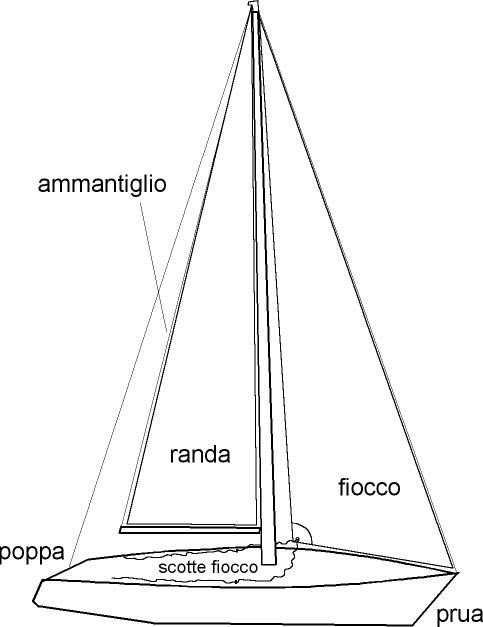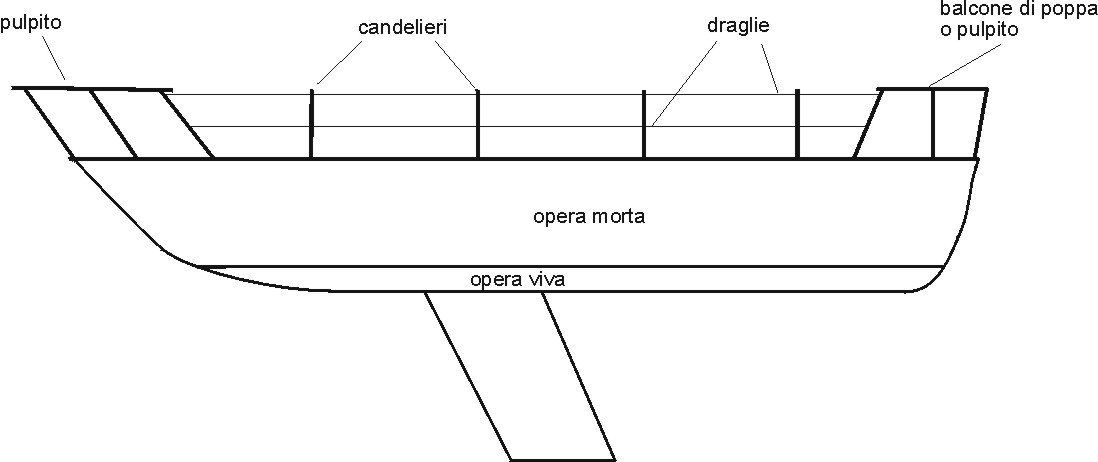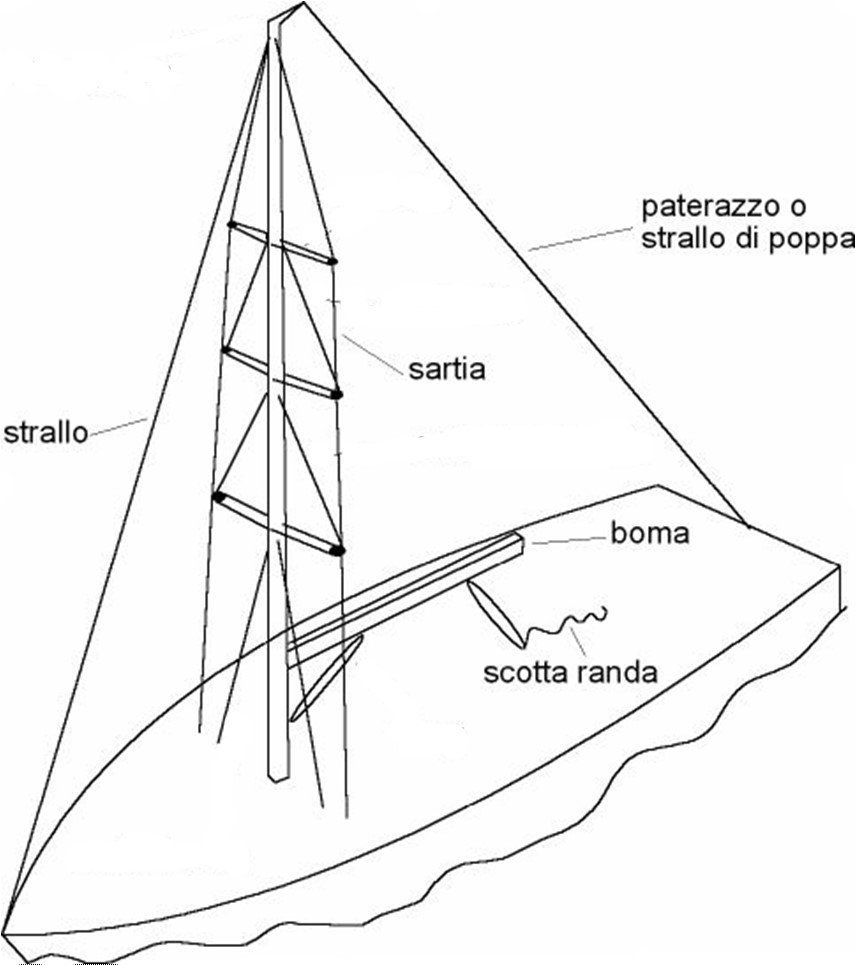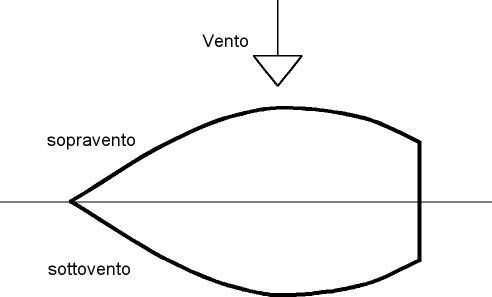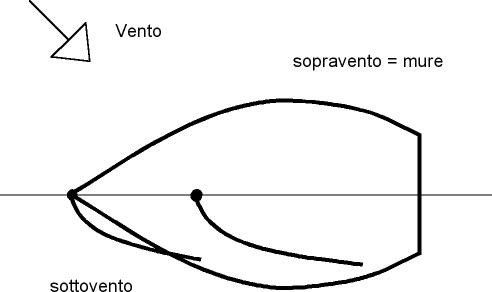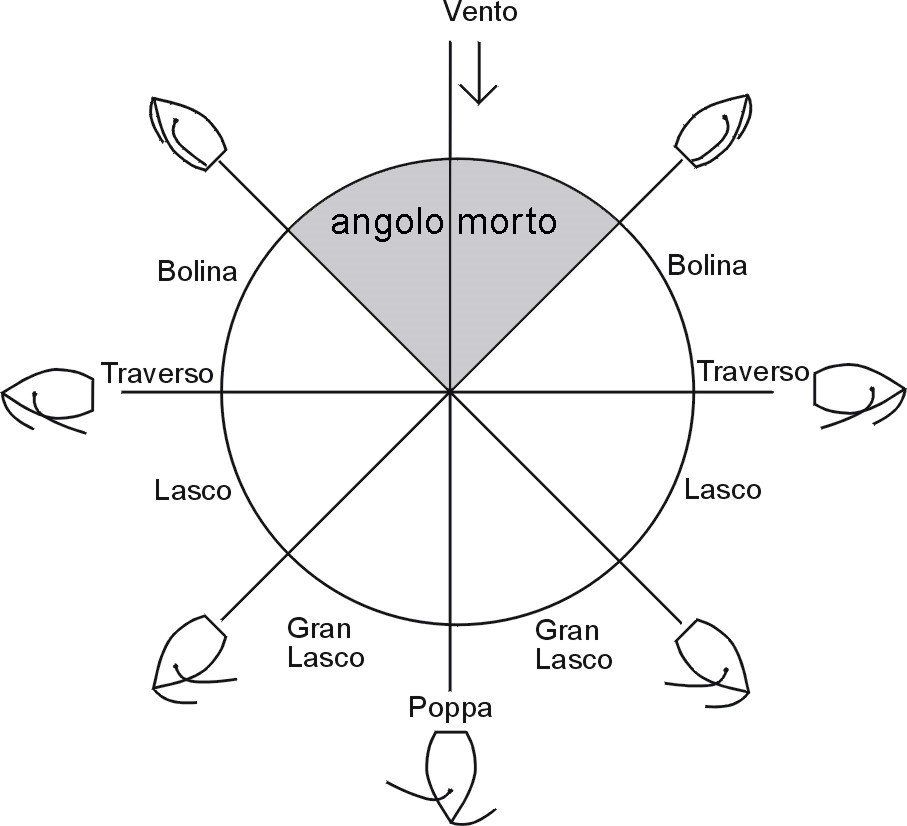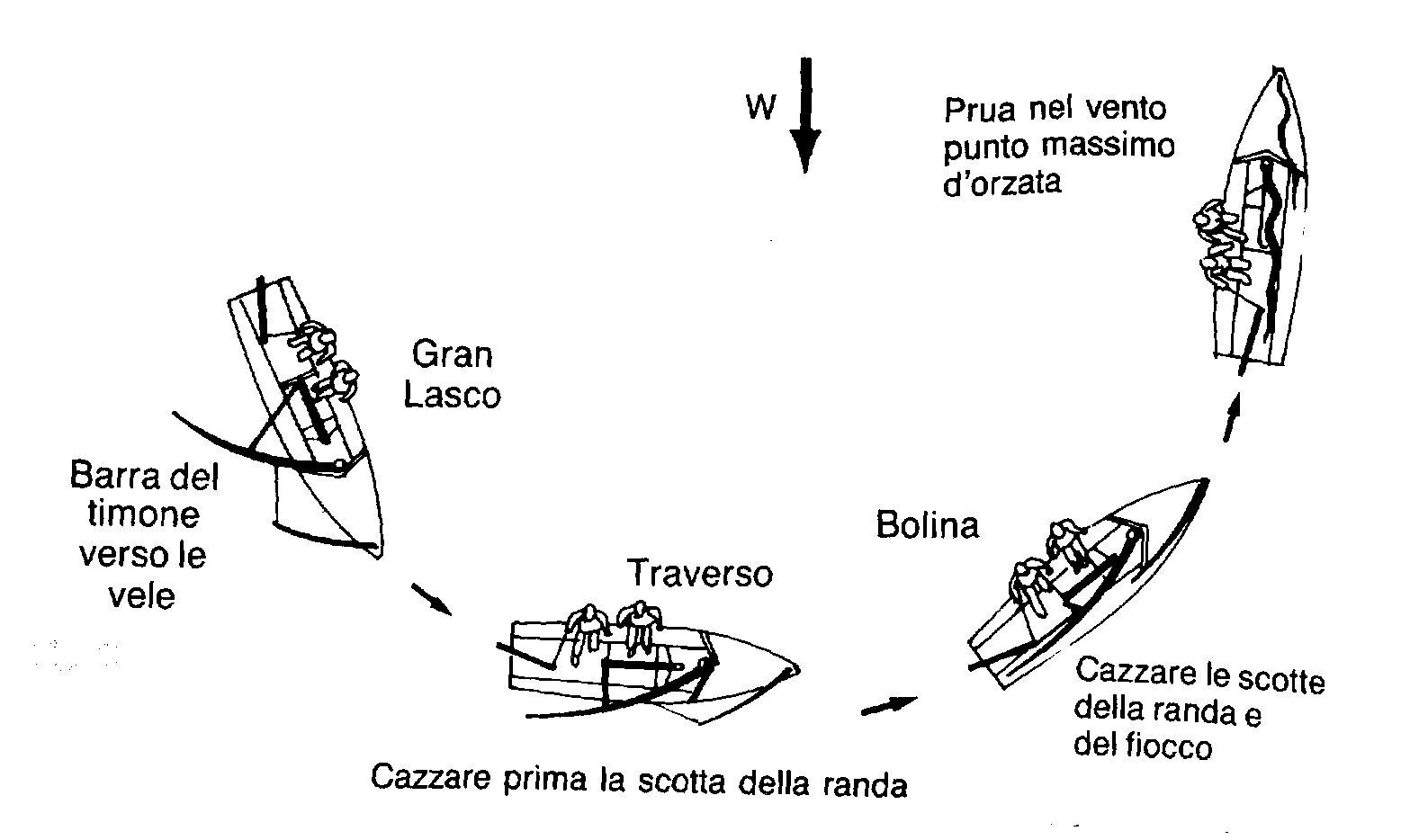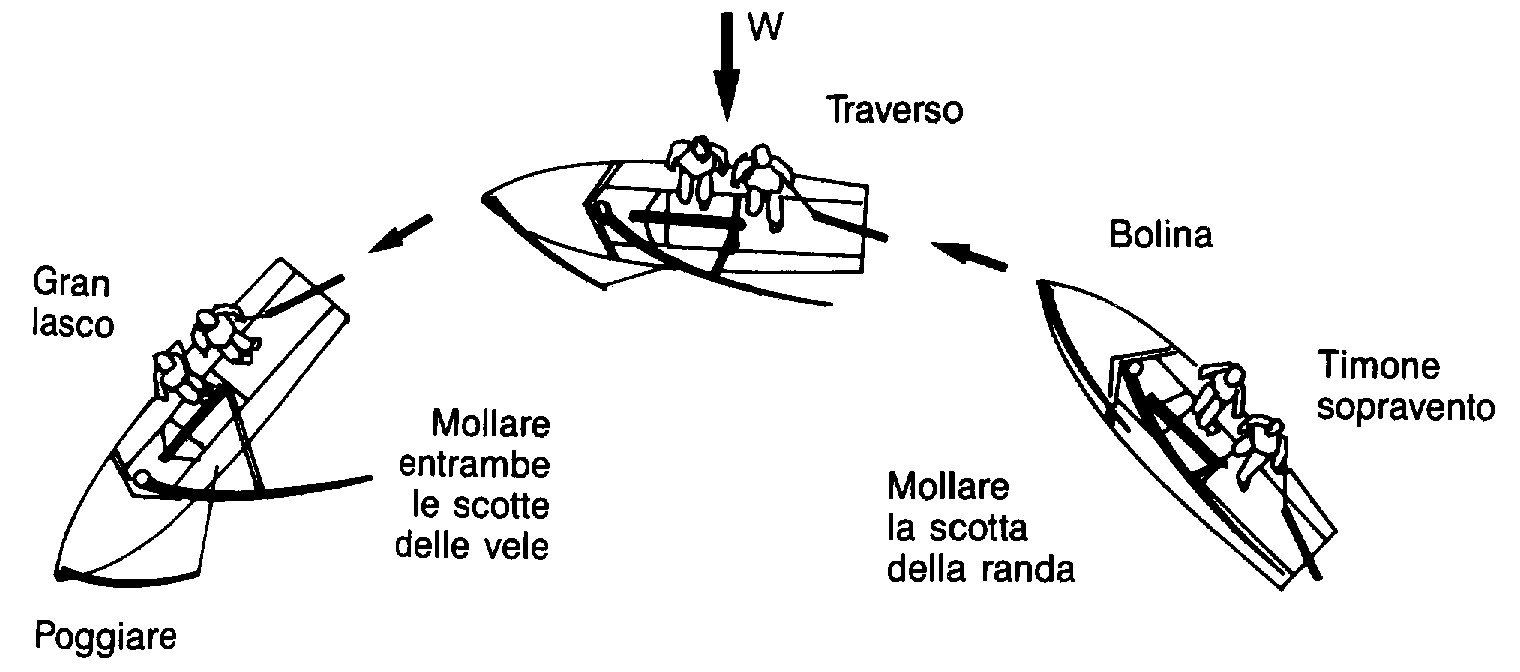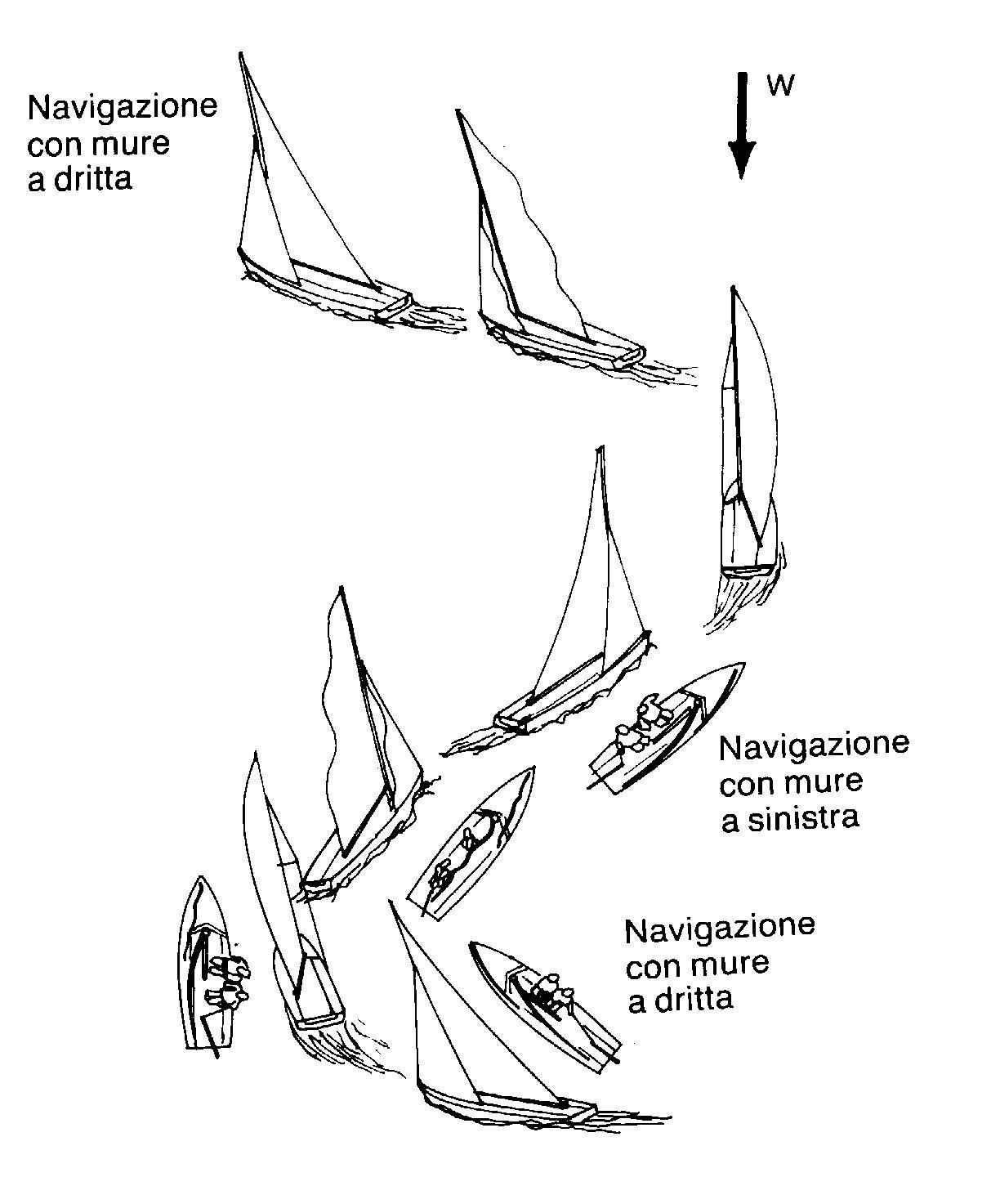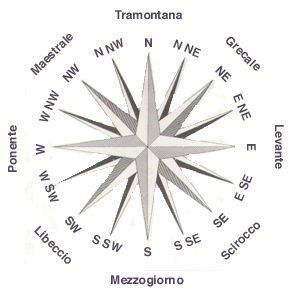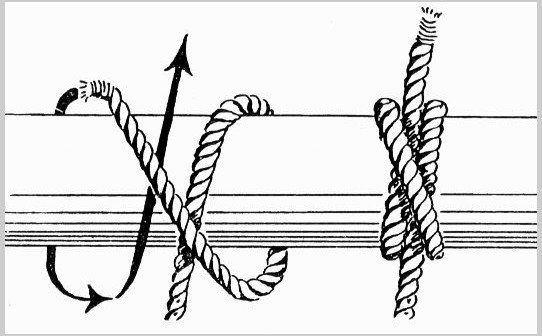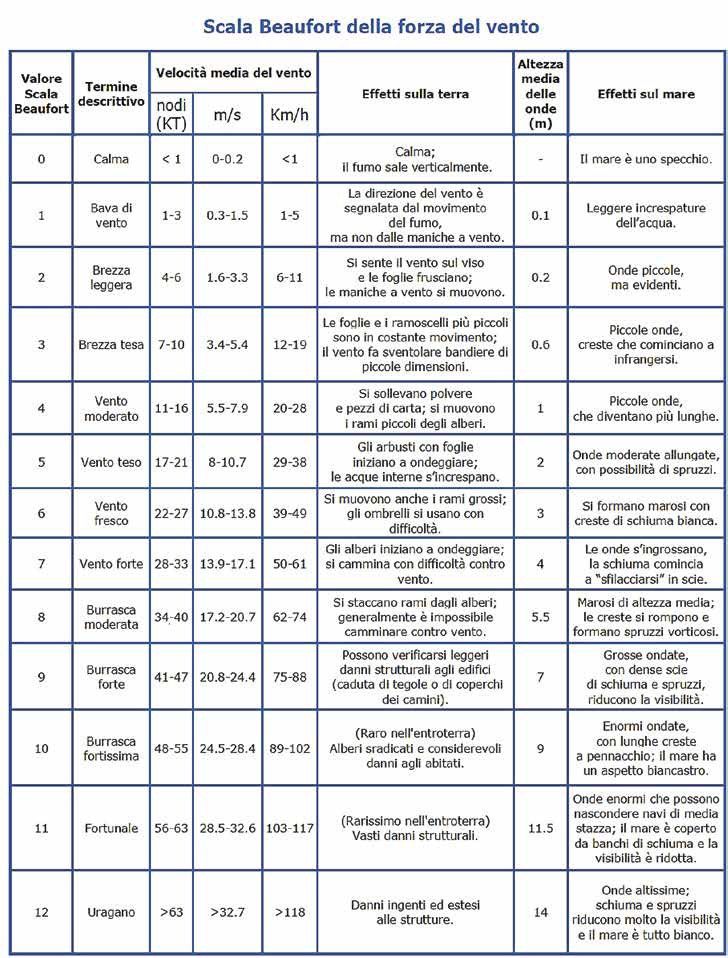sailing principles and fundamentals
Sailing principles and fundamentals
Scarica il manuale di Wendy
4-The boat and the wind
From now on the world for us who go sailing is divided into two parts: downwind (Leeward) and upwind (Windward)
When the wind hits a boat from one side (windward side) it is said that the boat has
tack (mura) on that side, the sails are lined on the opposite side (leeward side), so we will have: starboard tack (mura a dritta) , port sails (vele a sinistra), port tack (mura a sinistra), starboard sails (vele a dritta).
5-The ways
The way is the angle formed by the direction of the wind and the direction of advance of the boat. It is the basic concept of sailing. It is established based on the direction of origin of the wind and the head of the boat.
In every moment of our navigation we must be aware of the direction of the wind. The tack of a boat is always established by the position of the boom, which is always on the side opposite the tack. We divide the gait pattern into two semi-circumferences and consider the stern gait the point at 180 ° and the direction of origin of the wind the point at 0 °. From the direction of the wind we have an angle of 90 ° (45 ° to the port and 45 ° to starboard) which is called DEAD ANGLE. A boat with its bow pointing towards this angle will have its sails flapping, not catching the wind and therefore it will stop. To begin to see our sails inflate and the boat move forward we must therefore get out of this dead corner. We can do it both to starboard and to port, the two semicircles are identical respect to the way, they are different for the tack that our boat will have. We will then find ourselves in close-hauled (bolina), that is the way closest to the dead angle. Our sails are flat and well haul aft: the sheets that are used to adjust the sails are "pulled" to the maximum or almost. We bear away and enter in abeam (traverso). At this time, the angle formed by the longitudinal axis of the boat and the direction of the wind is between 80 ° and 100 °. For most boats this is the fastest way. The abeam also divides the ways into two categories: the against wind ways and the load-bearing ways that go from the abeam to the stern. We continue to bear away and leave the sheets of our sails and we arrive at the way of FREE (Broad reach), the sails are beautifully swollen and round, the boat is sweeter at the helm, the wind seems to have decreased. We let go and bear away again and reach the pace of FULL FREE (Full Broad reach). The wind seems to drop more and more. A further bear-away and we arrive in FULL STERN (downwind). Our boat seems very slow, but it is only appearance ... when we have the wind at the stern perfectly at 180 ° (at the edge of the wheel) we will be able to make a BUTTERFLY way.
broad reach, running free, running on the quarter:
andature al lasco
6-sailing maneuvers
Let's now we introduce some seafaring verbs: to luff (orzare) and Bearing away (poggiare). To tack (virare) and To gybe (strambare).
To luff it means bringing the bow of the boat towards the direction of the wind.
Bearing away it means moving the bow of the boat away from the direction of the wind.
To tack:
Tacking we change the tack of our boat. To do this we have to do two things: cross the blind spot in the direction of the wind. We start up close-hauled and make sure that our boat has a good headway (own or inertial speed). The helmsman calls the tack, that is, he warns all the crew that he is about to tack. When everyone has declared that they are ready, the helmsman declares that he tacks and luffs decisively. The bow of the boat enters the blind spot, the sails begin to flap. Thanks to the fresh way acquired in the previous upwind, the bow passes the blind spot. The jib is completely dropped, to be screwed again, but this time for the new tack. But remember to be very careful with the boom! Because in turns you change tack and then the boom goes from starboard to port or the other way around. In any case, the boom passes with great energy and speed over our heads.
To gybe
Let's now look at the stern tack. In this case we are at running on the quarter (gran lasco). The helmsman calls for the jibe and awaits the crew's response. At this point the helmsman bears away a little, bringing the boat to a stern pace. The jib, foiled by the mainsail, no longer carries, and collapses. To haul (cazziamo) the whole sheet of the mainsail. We then bring the boom a the middle ships and pass it to the other side, thus changing the tack. After the boom, we loose the mainsail sheet. At this point the jib is also passed and the jibing (strambata) maneuver is complete. And we are on the running on the quarter (grann lasco) with new tack.
to haul, to haul taut, to set up: modi di di dire cazzare
to ease, to loosen, to give away: modi di dire lascare
7-The winds
True Wind (vento reale) it is the wind that actually blows. We feel it when we are standing still.
Indicated wind (velocità della barca)
Apparent Wind (vento apparente) è il vento risultante dalla differenza tra il VR e il VV.
Now let's introduce some units of measurement that are used in the navy: the nautical mile (NM) is the unit of measurement for distances. It is equal to 1,852 meters, the knot (kn) is the unit of measurement for speed. It equals miles per hour. So it is called knot or mg / h. The strength of the wind is interpreted with the Beaufort scale, on a scale from 1 to 12 where 12 is the greatest intensity. Each point also corresponds to a certain height of the wave.
The one below is called the wind rose.
8-The knots
The knots of a boat are very important: the safety of the equipment, the crew and the boat depends on the quality and tightness of the knots. Nautical knots have the following characteristics: quick to perform, they have a secure seal, easy to untie even if they have undergone strong tension. However, we must know which one to use depending on the use they must have, the task they must perform. The knots that will be useful to our cause are only two:
Bowline-knot: (gassa d'amante)
the prince (or princess) of knots, used extensively in boats, knot to form a ring at the end of a rope so that it can tighten without choking.
The "clove hitch"
(nodo parlato)
knot used both for mooring and for fixing the fenders, it is formed by two paired and crossed half-necks so that the tensioned line and its head remain inside the half-necks, so as to self-choke.
For information, we attach an indicative table of the Beaufort table in use mainly among sailors
Scala Beaufort
Gale warning: avviso di burrasca
Storm: tempesta
Choppy: mare agitato, molto mosso
Smooth: poco mosso
North wind: tramontana
North-West wind: maestrale
North-East wind: grecale
Sirocco: scirocco
Gusty: ventoso
Fine: sereno
Gust: raffica
Leeward: sottovento
Windward: sopravento
Handout for preparation for sailing and for the team sailing training project
Material for internal use World sailing charter Ltd, edited by:
Paolo Spallone


